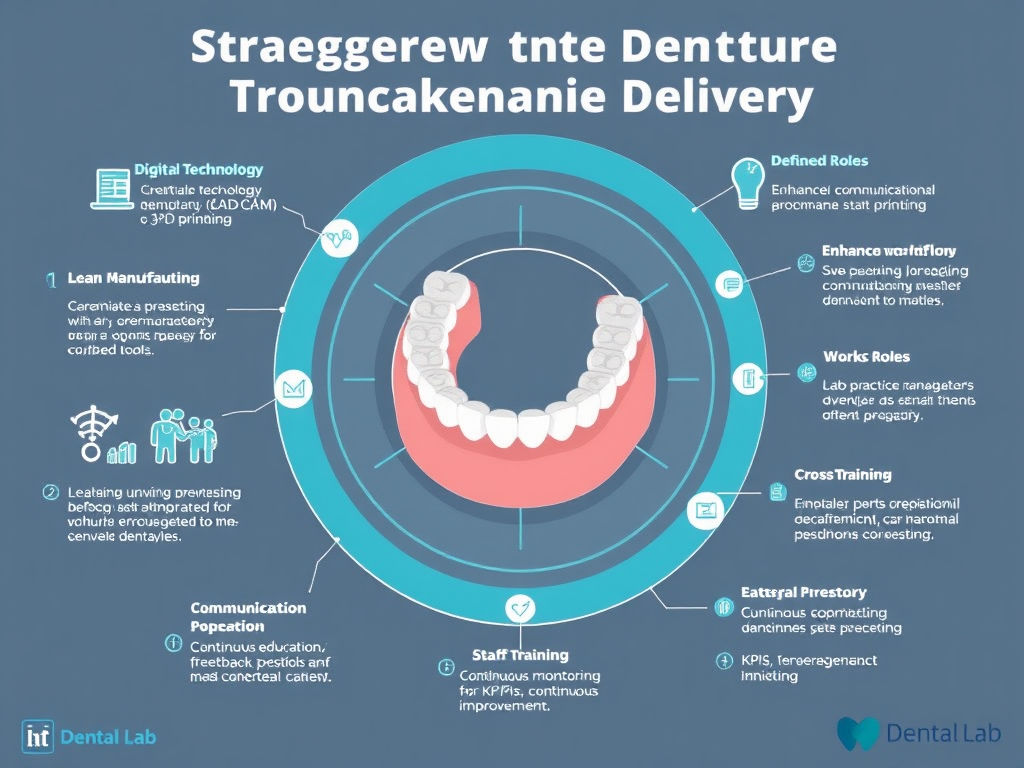What is a zirconia all-ceramic dental crown?
2024-09-19
2025-03-31

Utilizing CAD/CAM Systems
Integrating Computer-Aided Design and Computer-Aided Manufacturing (CAD/CAM) technology into your dental lab can dramatically reduce the time required for denture fabrication. These systems allow for precise digital impressions and models, resulting in quicker production cycles. With CAD/CAM, dental technicians can create customized dentures with remarkable accuracy and reduce manual labor, thereby speeding up the overall process.
3D Printing Innovations
3D printing has revolutionized denture production. This technology enables the rapid prototyping of dental appliances, significantly cutting down manufacturing time. It allows for the creation of intricate designs that are often more difficult to achieve with traditional methods. By investing in 3D printers, dental labs can enhance flexibility in design and expedite the production process.
Implement Lean Manufacturing Principles
Applying lean manufacturing principles involves analyzing every step of the denture production process to identify waste and inefficiencies. Streamlining workflows, minimizing unnecessary steps, and optimizing the use of resources can lead to significant time savings. This approach encourages continuous improvement and empowers staff to contribute ideas for enhancing efficiency.
Defined Roles and Responsibilities
Clearly defining roles and responsibilities within the dental lab helps to avoid confusion and overlapping tasks. When each team member knows their specific duties, the workflow becomes smoother, reducing delays in production. Regular meetings to review task assignments and progress can further enhance coordination and efficiency.
Strengthening Lab-Practice Communication
Efficient communication between the dental practice and the lab is essential for minimizing turnaround times. Using digital platforms to send prescriptions, patient records, and design specifications can eliminate delays associated with traditional communication methods. Establishing an open line of communication allows for quick clarifications and reduces the likelihood of errors.
Feedback Mechanisms
Implementing feedback mechanisms to gather insights from dentists regarding the fit and aesthetic of dentures can streamline future production cycles. Understanding areas that may require faster adjustments can help the lab respond more efficiently to practitioner needs.
Continuous Education and Training
Regular training and education for staff is critical in adopting new technologies and methods. Keeping your team updated on the latest advancements in denture fabrication and production techniques can lead to more efficient practices. Conducting workshops and skills development sessions can empower employees to work more effectively and confidently.
Cross-Training Employees
Cross-training team members encourages a more versatile workforce. When staff are trained in multiple areas of the production process, it allows for greater flexibility in managing workloads, especially during peak times. This adaptability can help to maintain production flow even during staff shortages.
Implement Key Performance Indicators (KPIs)
Establishing KPIs allows dental labs to measure efficiency effectively. Tracking metrics such as production time, error rates, and delivery times helps identify trends and areas for improvement. Regular analysis of these KPIs can drive informed decisions that enhance overall efficiency.
Continuous Improvement Process
Establishing a culture of continuous improvement encourages teams to seek ways to enhance production processes. Regularly reviewing efficiency metrics and soliciting feedback from staff can lead to innovative solutions and a more responsive approach to challenges.
Shortening the production and delivery times of dentures is crucial for improving workflow efficiency and elevating patient satisfaction within dental practices. Embracing digital technology, optimizing workflows, enhancing communication, investing in staff training, and continuously monitoring performance are all strategies that can help achieve these objectives. By implementing these measures, dental labs can not only streamline their operations but also position themselves for long-term success in a competitive industry.